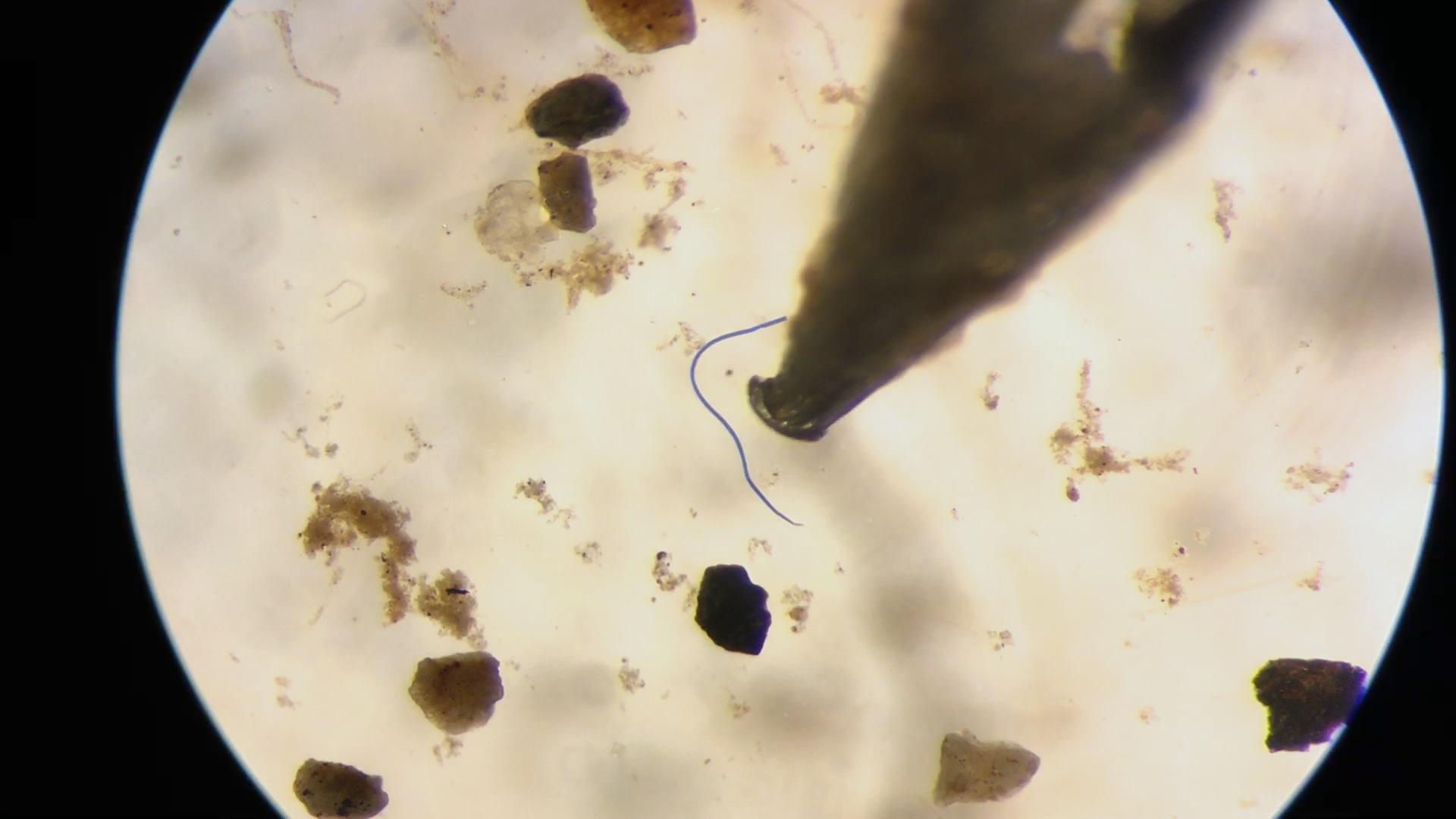
Microplastic fibers are less than 5mm and often show up a vivid color under the microscope. Researchers at the University of British Columbia have developed a device that can detect and quantify microplastics in water samples.
Todd Sonflieth / OPB
Microplastics are pretty much unavoidable. They’re everywhere around us: floating in the most pristine rivers and frozen in sea ice, polluting the deep ocean and coming out of our taps. They’re also in our food and in the air, which means they’re inside of us. And we still don’t really know what long-term impacts microplastics will have on our health.
Because they’re so small, the tiny plastics are invisible to the naked eye. It’s difficult to know, for example, if the plastic bottle we’re drinking from is shedding plastic into our water.
Researchers at the University of British Columbia have developed a new, low-cost test that can detect and measure micro-, and even tinier nanoplastics, in water. The team created a portable chamber, small enough to fit in your hand, that can capture fluorescent microscopic images of a sample. The images are then wirelessly transmitted to a smartphone where machine learning software developed by the researchers figures out how much plastic is present. The process takes about 20 minutes.
The prototype system cost around $500 to build, but each test costs a fraction of a penny to run. The device could be useful for the food processing industry or members of the public looking to avoid plastic-contaminated water.
The research is published in ACS Sensors and can be read here.

In this video still, a researcher photographs water using a new microplastics detection device developed at the University of British Columbia.
Courtesy of the University of British Columbia
In these science snapshots, “All Science. No Fiction.” creator Jes Burns features the most interesting, wondrous and hopeful science coming out of the Pacific Northwest.
And remember: Science builds on the science that came before. No one study tells the whole story.




